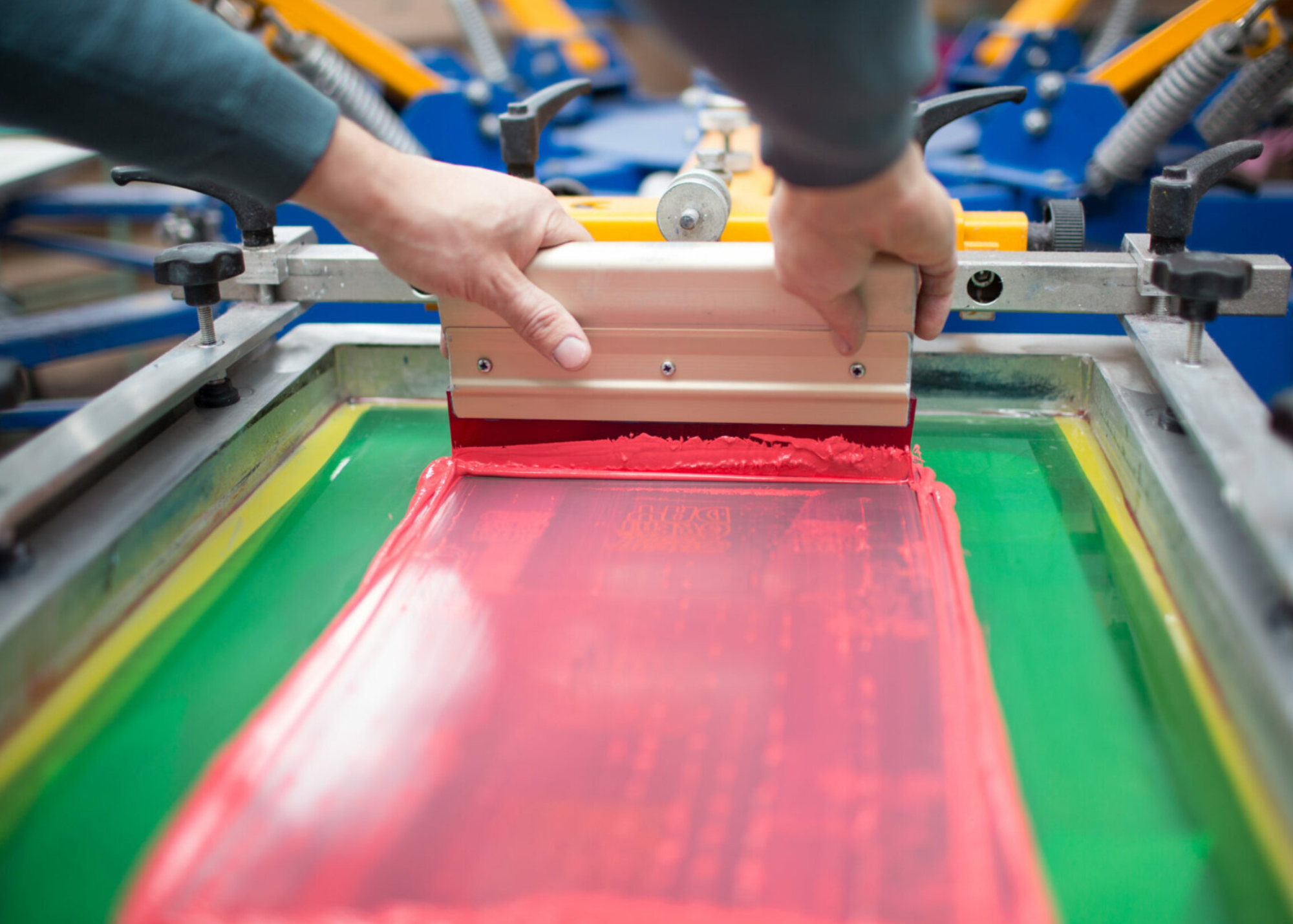There are typically two situations when you’d want to switch to a different screen printing ink. In the first case, you might be working on a different type of substrate than usual — such as glass, wood, plastic, or any other material. In the second case, you might be looking to switch to a different brand. If your company is making a large batch of orders, choosing the wrong type of ink can be costly. Here’s a guide on how you can choose the right screen printing ink for your printing job so that you get the results that you’re looking for.
Working on a Different Type of Substrate
Imagine that a client you’re printing for is experiencing growth in revenue, allowing them to invest some of the funds toward expanding their product line. Now, the client wants to offer their customers a number of new items such as picture frames, plastic water bottles, key chains, and other products that feature their brand logo and design.
Incorporating a new substrate is essentially a different printing job altogether because how the ink will perform on the substrate depends on what type of screen printing ink that you choose, and there are a number of options available. The first choice you may want to consider is deciding between a UV ink or a solvent-based ink. Each of these ink types come with their own unique characteristics, such as drying speed, degree of gloss, level of opacity, outdoor resistance, and basic shades, to name a few.
Once you’ve decided between UV ink and solvent-based ink for your screen printing business, you’ll find that each type can be further categorized into separate ink types. For example, our product line features 10 different types of UV inks with their own special characteristics.
Similarly, our solvent-based ink line features 9 specific ink types with their own unique features — one may have a satin-like gloss while the other has a standard gloss finish.
The advantages of knowing these characteristics are: 1) you can be sure that the ink will adhere to the given surface, 2) you can get the design effects that you are looking for, and 3) you can better assess the potential of its longevity. Certain ink types we offer are more resistant than others to certain exposures (e.g., steam, water, heat, sunlight) depending on the category they belong to.
Along with these characteristics, each ink type is fine-tuned to work with a specific substrate — acrylic glass or wood, for example. Here’s a link to our handy-dandy chart that makes matching the best ink type with a specific substrate a breeze.
Deciding to Switch to a Different Brand
Many of our clients first contact us because they are experiencing problems with getting an ink to adhere to a particular substrate. For this reason, they have decided to switch to a different brand of ink.
We ask them to send a sample of their substrate to us, and, from there, we take the substrate over to our screen lab, do test prints, and pre-treat it. Pre-treating the substrate is an important step to take before printing on a product. It gives the ink a better surface to stick on, and can be in the form of a wipe-on chemical treatment, a flame treatment, or even a hybrid of both. After that, we do a series of tests, such as a scratch test and a tape test, to see if the ink comes off. Through this rigorous product testing, we can definitively discern if the ink works for the client’s substrate or not. If not, we’ll try again until we can guarantee a successful match. When the ink is ready, we send the solution to the client.
Needing Help with Color Profiling
Many of our clients come to us because they need help with color profiling, so we ask them: “What colors do you need?” “Do you need a standard red?” “Do you need to work with pantone colors?” We make sure to provide the colors our clients need to perfectly match their specifications.
Keep in mind that the colors you see on your monitor might not match the colors of your products once they are actually printed.
For those who need help with color matching, we provide a color management system. Customers who use our ink can download our ColorManager MCM 2 to take out any guesswork and avoid having to work through trials and errors.
We’ll even mix your colors for you internally at our lab. Your match may require several colors at varying percentages. We build a formula that gives them the opacity that they need. From there, our mixed ink is ready to go.
The benefits of using our services are that we remove the guesswork and make switching over to a different screen printing ink extremely simple. Have questions? We’re ready to help from start to finish. Contact us today! You can also check some more printing tips here.




